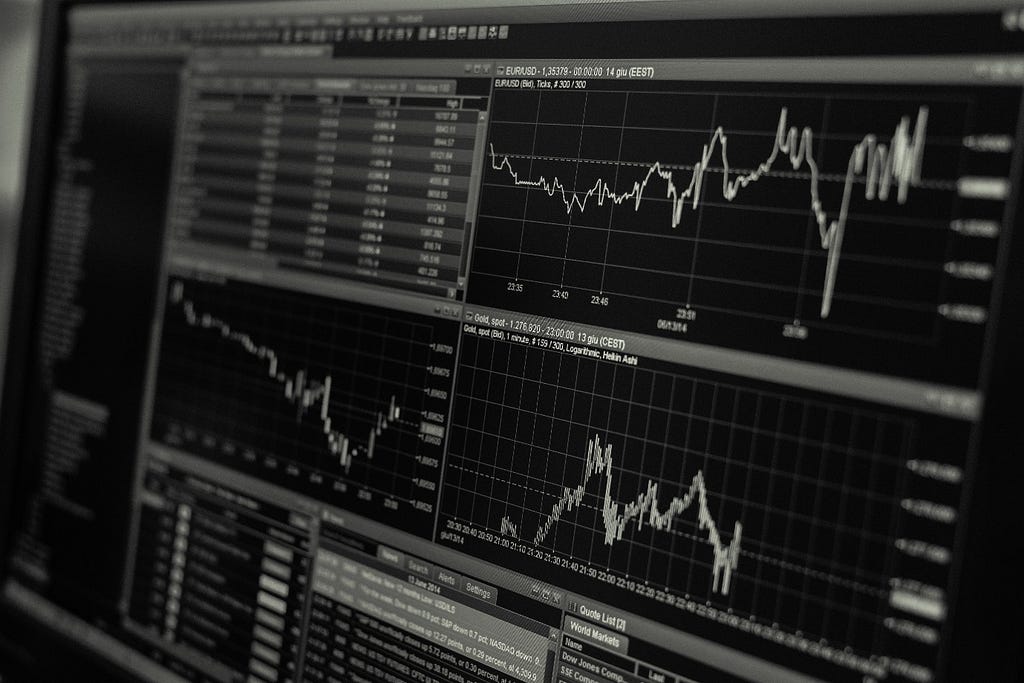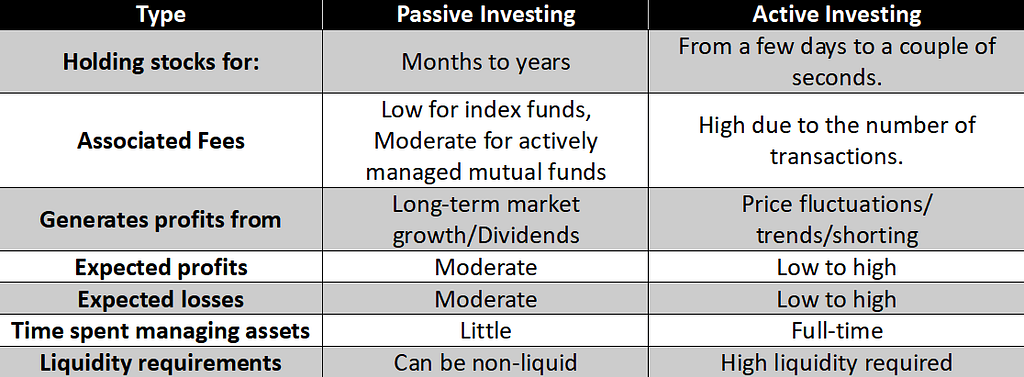Latest news about Bitcoin and all cryptocurrencies. Your daily crypto news habit.

Get your skin in the game
The Stock market can seem like an intimidating place: expert investors bidding up prices in anticipation of new trends, market analysts flaunting around their indecipherable jargon, important people making even more important calls. It all seems very complex and reserved to insiders. But it doesn’t have to be.
Potential investors are all shackled by anxiety: Only one in three millennials is currently investing in the stock market, according to Bankrate, a financial advice website.
Fear takes many shapes and forms. For many it’s the “possibility of a collapse”; for some, it’s the lack of professionals they could entrust their savings with; for many others, it’s the simple question: “How do I begin?”
And that’s the pivotal point: many want to get their skin in the game, but just don’t know how. That’s why in this article we’ll cover the basic two ways of investing and, later on, trading strategies to help the newcomers out.
 Passive vs Active trading strategies
Passive vs Active trading strategies
Before you spend all of your savings on a Warren Buffet outfit and go storm the NASDAQ stock exchange, you have to sit down and choose the appropriate strategy. Everyone knows to buy low, sell high — but there’s more to it.
Broadly speaking, there are two types: Passive and Active investing.
Passive investing
Passive investors hold on to their assets despite the up-and-down price rollercoaster — it’s all about the long-term outcome for them. They usually invest in mutual funds or index funds and are not full-time occupied with trading throughout the day.
Also known as a buy-and-hold strategy, passive investing means that investors do not seek to time the market perfectly or profit from short-term price fluctuations — the assumption is that the market will generally deliver positive returns over a long time horizon.
Let’s look at an example. The Standard & Poor’s 500 index — one of the most widely known of its kind — has been jumping up and down throughout the year (see graph above). But its overall value has nevertheless grown by 8.65% since the beginning of the year.
Passive investors have a relatively low risk-tolerance, and think they are unlikely to out-smart the market. Their profits are thus moderate, but so are their potential losses.
They seek to avoid the broker fees associated with constant buying and selling. Some collect dividends from firms. Most spread their risk across multiple industries.
Active investors are more risk tolerant. They buy and sell securities in a time frame of a few hours for quick profits by exploiting short-term price fluctuations. In other words, they’re the ones that jump on the ship when the prices go up, and they jump out once they begin to plummet.
The potential returns are high — some investors bring home six-digit earnings. But equally large is the possibility of burning all of your savings because of a few mistakes.
Because the fees for buying/selling are relatively high and the stock prices usually don’t swing much — active traders rely on a large volume of trades to make a buck.
That also means the assets they invest into must be liquid (quickly exchangeable back to hard currency). That’s why you won’t see day-traders buying up works of 19th century French photographers — they simply couldn’t sell them on the market quickly enough.
In the past, active trading strategies were reserved to professional traders, who had and in-house brokerage (to lower commission fee) and could cope with high-frequency trading.
But with real-time market data available to everyone — there is a whole plethora of online tools that offer opportunities for any individual to become an active trader.
Active trading is speculative in nature. Investors thus depend on some sort of market strategy — a type of active trading they believe will help them beat the market.
Some are indeed superstitious:
In one of the episodes of a famous American sitcom “Friends”, Monica, one of the main characters, notices a stock with her initials (MEG) and decides to try her luck as an active trader. Her strategy, obviously, doesn’t hold.
Other methods are built on rigorous technical analysis and predictive methods. The following are only the most common ones.
Trading on the News
Markets rally up and down constantly for a number of reasons. It might be a corporate scandal, an announcement that central bank is raising interest rates or a speech delivered by a country’s leader. As the name implies, traders seek to exploit these news.
Day trading
Now synonymous with the definition of “Active trading”, Day trading is essentially a strategy to only trade securities on the same day. The stocks you bought are sold within the same day, and no position is held overnight.
Positions trading
Positions trading is the method of “riding the trend”. By using longer term charts in combination with other predictive methods, position traders seek to jump on the “wave” and benefit from both the up and down of market movements.
Swing Trading
Swing traders are the “scramblers” that get in once some trend breaks. At that point, there is some volatility in the market — the ups and downs become far more likely. Swing trading is a form of art that seeks to capture profits from those small short-term swings.
Scalping
Scalping is a method of profiting from thousands of tiny movements in price based on tick charts and one-minute charts. The strategy involves exploitation of various price gaps usually caused by bid-ask spreads.
Short selling (Shorting)
Excluding the technical element of how it is actually done, shorting is essentially an investment on the premise that a stock or a whole market will go down. Numerous movies have been made about it — it is perhaps the most sinister way to invest, but, in a crisis period, potentially the most profitable.
Other notable mentions that didn’t make it into the list are range trading, pairs trading and momentum trading.
A few final words
Time is your friend in the stock market. The earlier you get started, the earlier you figure things out — the better your returns will be.
The amount of money in the market can seem way above your pay grade — New York Stock Exchange alone had a market capitalization of US$21.3 trillion in June 2017 — but, in reality, you can begin passive investing into index funds with as little as $5.
You don’t have to take your whole savings on a roller coaster ride, but it is important to put a portion of your income into stock market. You’re better off guarding against money-eroding inflation and to saving up for your retirement. Arm yourself with knowledge and storm the market.
Find more useful tips and comments on new and improved ORCA Telegram group. We always ready to answer your questions!
Roller Coaster Ride: Stock market Trading Strategies for Newcomers was originally published in Hacker Noon on Medium, where people are continuing the conversation by highlighting and responding to this story.
Disclaimer
The views and opinions expressed in this article are solely those of the authors and do not reflect the views of Bitcoin Insider. Every investment and trading move involves risk - this is especially true for cryptocurrencies given their volatility. We strongly advise our readers to conduct their own research when making a decision.



